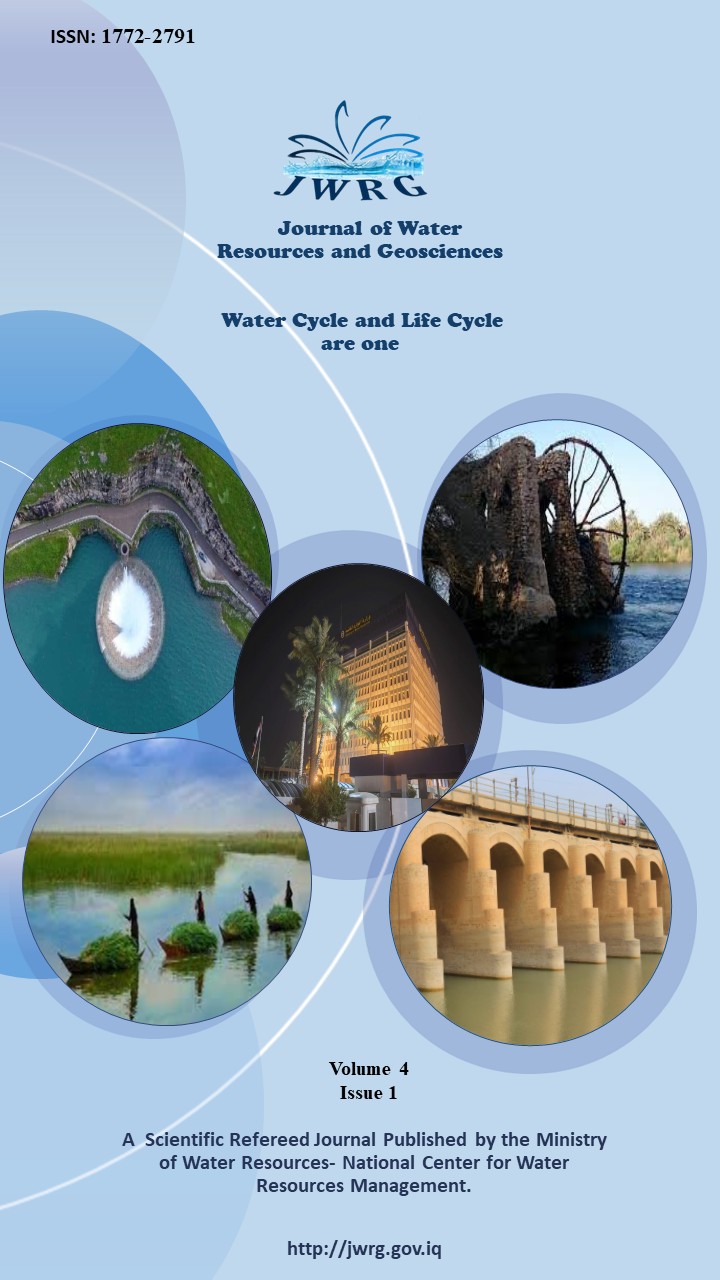Studying the Effects of Heavy Metals Concentrations on selected Water Treatment Plants in Babylon Governorate
Keywords:
Drinking water contamination; Heavy metals; Pollution; Rivers; basins; Purification process.Abstract
With its high population density, Iraq faces numerous health problems due to pollution resulting from population activities affecting various components of the environment, particularly heavy metals in rivers. Unfortunately, most water treatment plants in Iraq lack a chemical treatment stage to remove heavy elements. To address this issue, the current study was conducted to measure the concentrations of toxic trace metals in drinking water, which can pose serious health risks, including cancer. The study focused on the Abi-Gharaq water project, the Al-Tayyara water plant project, and the unified Al-Hillah water project in Al-Hilla City. Experimental and analytical methods were applied to assess Samples taken from raw water before entering the projects, from sedimentation and filtration basins within the projects, and after adding chlorine for sterilization. The heavy elements studied were Aluminum, Copper, and Zinc. The study found a high concentration of copper in raw water before entering the Abi-Gharaq water project. In contrast, Aluminium in the water purification stages in the Al-Tayyara water plant project and the Abi-Gharaq water project exceeded the permissible limit of 0.20 mg/L according to the Iraqi Standard No. 417, 2001. Copper concentration also exceeded the permissible limit of 1.0 mg/L. The elevated levels of Aluminum may be related to the use of alum during the mixing basin stage of the purification process. Meanwhile, Zinc concentrations remained within the permissible limits of 3 mg/L for all stages.
References
Al-Mezori, H. A., & Hawrami, K. A. (2013). Evaluation of trace elements in drinking water of Duhok Province/Kurdistan region of Iraq. International Journal of Engineering Science Invention, 2(4), 47-56.
Chabuk A. J. (2009) .Evaluation of Selected Trace Elements in Shatt Al-Hilla River. Thesis, M.Sc., Department of Environmental College of Engineering, Babylon University.
Ghaedi, M., Fathi, M. R., Marahel, F., & Ahmadi, F. (2005). Simultaneous preconcentration and determination of copper, nickel, cobalt and lead ions content by flame atomic absorption spectrometry. Fresenius Environmental Bulletin, 14(12), 1158-1163.
Ghawi AH. (2017). Using natural coagulant to remove turbidity and heavy metal from surface water treatment plant in Iraq. International Journal of Engineering Technology and Scientific Innovation, 2(1), 551–563
Gyamfi, E. T., Ackah, M., Anim, A. K., Hanson, J. K., Kpattah, L., Enti-Brown, S., & Nyarko, E. S. (2012). Chemical analysis of potable water samples from selected suburbs of Accra, Ghana. Proceedings of the international academy of ecology and environmental sciences, 2(2), 118
Islam, M. S., Han, S., AHMED, M. K., & Masunaga, S. (2014). Assessment of trace metal contamination in water and sediment of some rivers in Bangladesh. Journal of water and environment technology, 12(2), 109-121.
Kwon, H. J., Yang, D. S., Koo, M. S., Ji, S. M., Jeong, J., Oh, S., & Lee, H. C. (2023). Long-lifetime water-washable ceramic catalyst filter for air purification. Nature Communications, 14(1), 520.
Lenntech, K. (2004). Water treatment and air purification. Published by Rotter Dam Seweg, Netherlands.
Li, J., Zuo, Q., Feng, F., & Jia, H. (2022). Occurrence and ecological risk assessment of heavy metals from Wuliangsuhai Lake, Yellow River Basin, China. Water, 14(8), 1264.
Mehrorang Ghaedi, M. G., Fathi, M. R., Farzaneh Marahel, F. M., & Farshid Ahmadi, F. A. (2005). Simultaneous preconcentration and determination of copper, nickel, cobalt and lead ions content by flame atomic absorption spectrometry. Fresenius environmental bulletin, 14(12),1158-1163
Rajeshkumar, S., Liu, Y., Zhang, X., Ravikumar, B., Bai, G., & Li, X. (2018). Studies on seasonal pollution of heavy metals in water, sediment, fish and oyster from the Meiliang Bay of Taihu Lake in China. Chemosphere, 191, 626-638.
Sanayei, Y., Ismail, N., & Talebi, S. M. (2009). Determination of heavy metals in Zayandeh Rood river, Isfahan-Iran. World Applied Sciences Journal, 6(9), 1209-1214.
World Health Organization (WHO). (2011). "Guidelines for drinking-water quality, 4th ed." Geneva, Switzerland.. DOI: https://www.who.int/publications-detail-redirect/9789240045064.
World Health Organization (WHO). (2013). Progress on sanitation and drinking-water: Fast facts. Geneva,Switzerland.DOI:https://apps.who.int/iris/bitstream/handle/10665/44584/9789241548151_eng.pdf/.
Zuthi, M. F. R., Biswas, M., & Bahar, M. N. (2009). Assessment of supply water quality in the Chittagong city of Bangladesh. ARPN Journal of Engineering and Applied Sciences, 4(3), 73-80.


